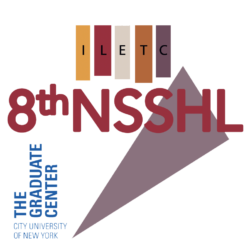To watch the presentation, enter password nsshl2021 below:
4 Replies to “How Age of Acquisition Affects the Production of Frequent Verbs in Bilingual Children Attending Dual-Language Schools (Michele Goldin, Esther Hur, Julio López-Otero)”
Comments are closed.




Thanks for your excellent presentation!
The lexical frequency by primary home language interaction is pretty intriguing. I could very much imagine that interaction working in the opposite direction from what you describe here.
Why do you think that lexical frequency has more of an effect for children who speak more Spanish at home? Is it because the increased overall exposure to the distributional patterns of Spanish gives them more frequency “data” in a sense than kids who have less Spanish exposure at home? Or another reason?
Thanks again!
Hola David!
It’s great to see you here! and thanks for your interest in our presentation. We are still trying to interpret these results to a larger scale, but it seems that this data is in some ways representing the dimension of the effects of frequency and the role of amount of exposure and activation of the HL within the HSs population.
For now, we can say that the effects are present on bilingual children that have the most exposure to the HL and previous data on adult HSs is indicating that these effects are present on intermediate adult HSs. Also, we can say that there are many factors taking in place such as a) proficiency, b) language use and exposure and c) specific language phenomenon. In addition, we can inform parents and current bilingual program teachers to encourage continuing using the HL at home with their children.
Hope to see you in person soon!
Best
Dear Michele, Esther, and Julio,
I really enjoyed your presentation. The effect of lexical frequency only in children with mostly Spanish in their homes raises questions I find interesting such as: I have always thought that lexical frequency can play a role on what gets acquired first. If so, an effect of lexical frequency should be seen on children with less exposure to Spanish, right? The idea being that if you go through a thresholf of exposure, you already acquired both forms pretty well, maybe werrors are not found. So, I’m trying to think why this effect of lexical frequency in morphology is found among children who come from mostly Spanish homes. I think it is a very interesting study. I only wich I could have seen you present in person and chat more 🙂
Best,
Pablo
Hola Pablo, un gusto verte aquí!
Thank you very much for your interest in our presentation! Looking into recent studies, lexical frequency effects in adult HSs, the effects of frequency were present on the intermediate adult HSs (subjunctive, DOM). However, we were able to find here that for child HSs in Spanish morphology, the children that used mostly Spanish at home were the ones that experienced this effect.
Currently, we are still trying to interpret what these results imply on a larger scale, but we’re thrilled that the effects interact with home languages use indicating that the amount of exposure to the HL implies not only attending to bilingual programs, but also the decision that parents make as their main language at home.